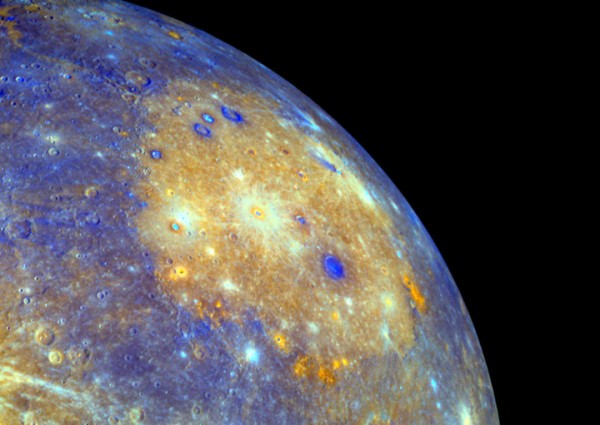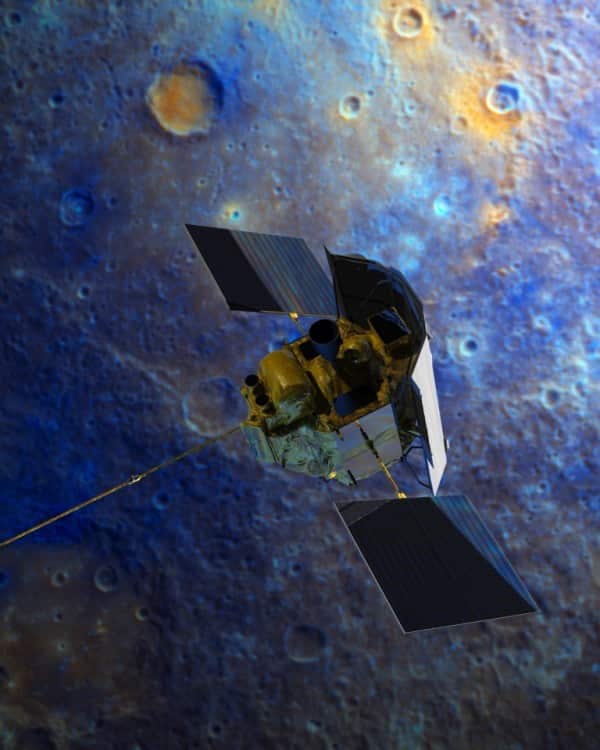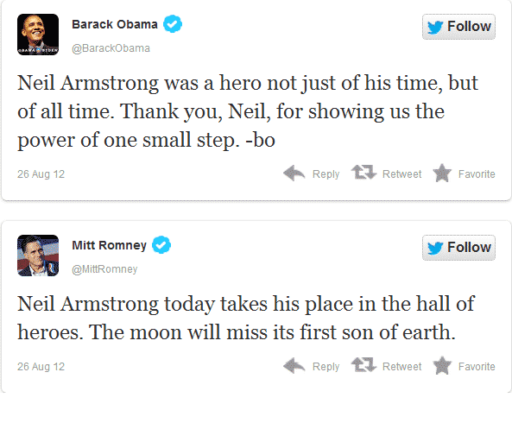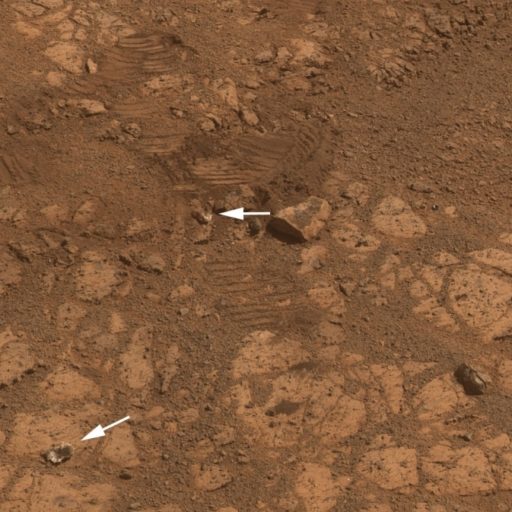On August 3, 2004, NASA launched a robotic spacecraft that will orbit the closest planet to the Sun and the eighth largest planet of the solar system, Mercury. Can you remember, what was the name of that space craft? It’s MESSENGER (an acronym of MErcury Surface, Space ENvironment, GEochemistry and Ranging). However, MESSENGER successfully entered Mercury’s orbit on March 18, 2011 and since then it has been studying the planet’s chemical composition, geology, and magnetic field. Recently, MESSENGER has revealed the chemical diversity on Mercury’s surface.
Mercury orbiter MESSENGER is equipped with X-Ray Spectrometer (XRS) through which it can measure the chemical diversity on Mercury’s surface. Shoshana Zoe Weider of the Carnegie Institution of Washington and some other scientists have observed Mercury’s Surface by analyzing 205 measurements of the surface composition via MESSENGER’s X-Ray Spectrometer. In general, the measurements show that Mercury’s surface composition is very different from that of other planets in the solar system. The planet (Mercury) has very high amount of magnesium and sulfur (10 times than on earth). This composition is similar to that expected from partial melts of enstatite chondrites, a rare type of meteorite that formed at high temperatures in highly reducing (low oxygen) conditions in the inner solar system.
Shoshana Zoe Weider said, “The X-ray spectrometer focuses on the estimation of elemental abundances on Mercury; i.e., the amount of magnesium, aluminum, sulfur, calcium, and iron in surface material. From there we can start to work out what kinds of minerals are present, then the types of rocks that were formed, and then we can start to unravel the geological history. The new findings further illuminate the geological history of the planet. We now know that these areas are compositionally distinct, indicating that different parts of Mercury’s mantle melted at different times and temperatures, and through volcanic activity created the materials in the different terrains. None of the other terrestrial planets have such high levels of sulfur. We are seeing about ten times the amount of sulfur than on Earth and Mars. In terms of magnesium, we do have some materials on Earth that are high in magnesium. They tend to be ancient volcanic rocks that formed from very hot lavas. So this composition on Mercury tells us that eruptions of high-temperature lavas might have formed these high-magnesium materials. Now we can correlate their findings with our data, providing increased confidence in what we are discovering about the planet.”
The results have been published in the Journal of Geophysical Research.
Source : NASA
[ttjad keyword=”best-selling-gadget”]




